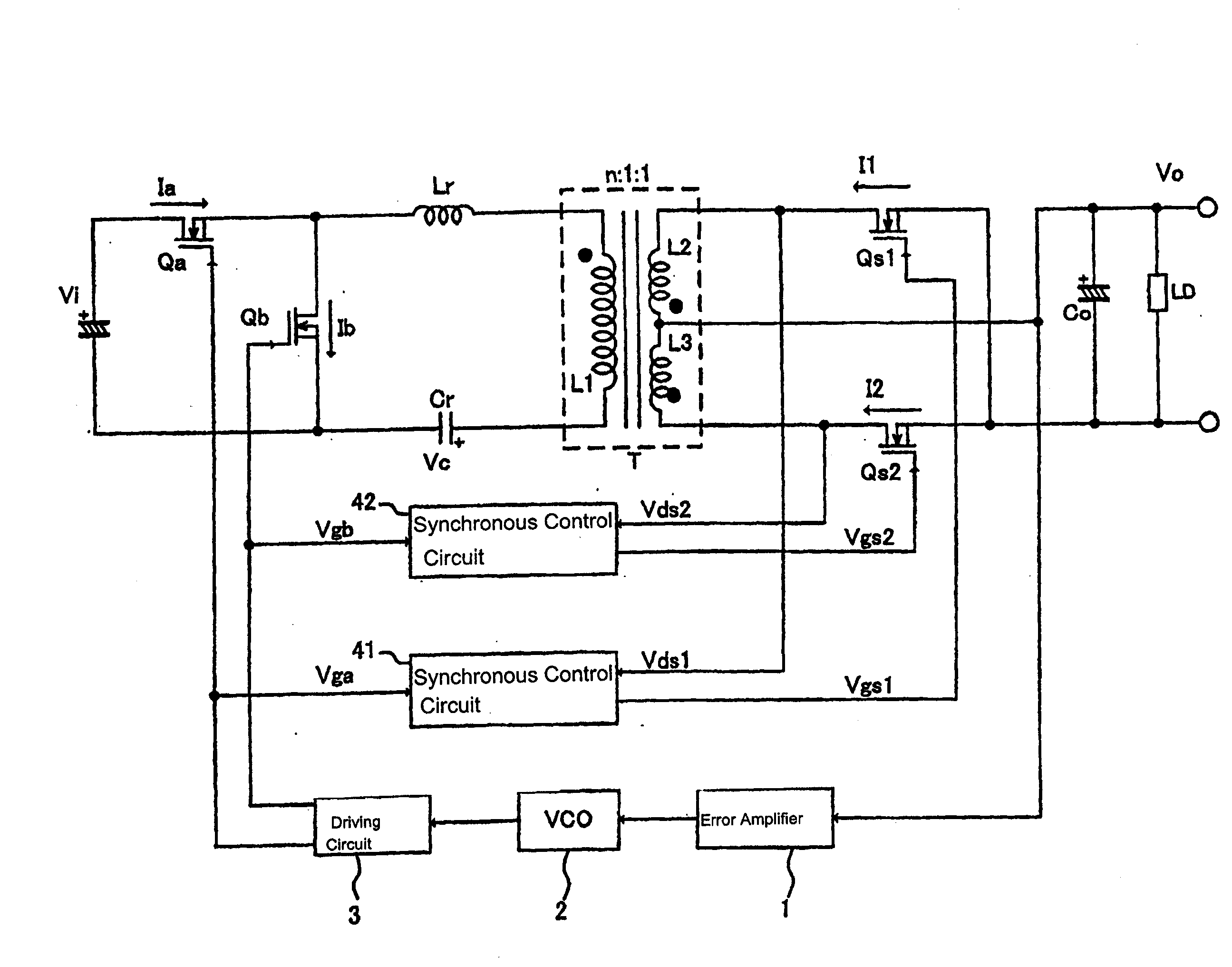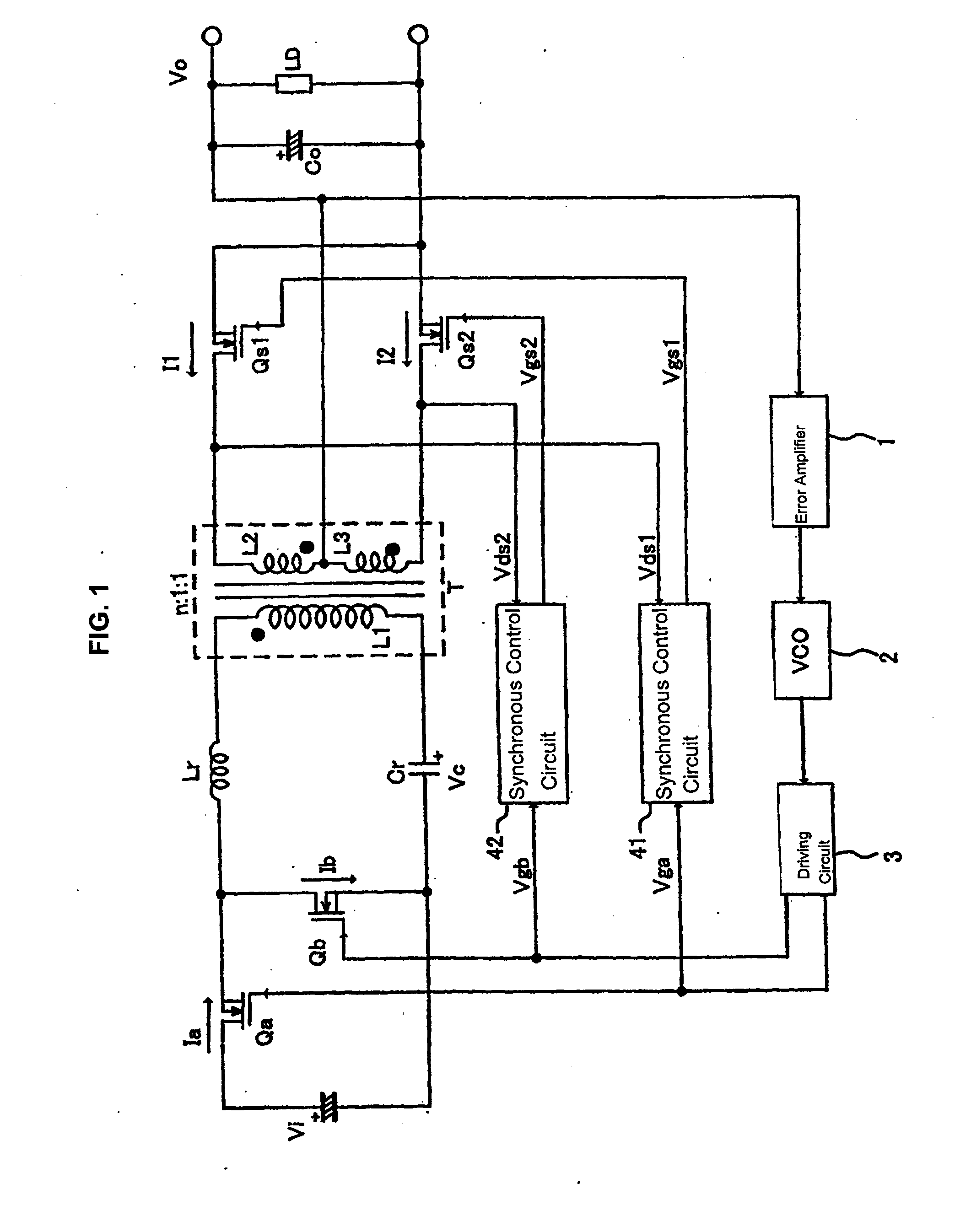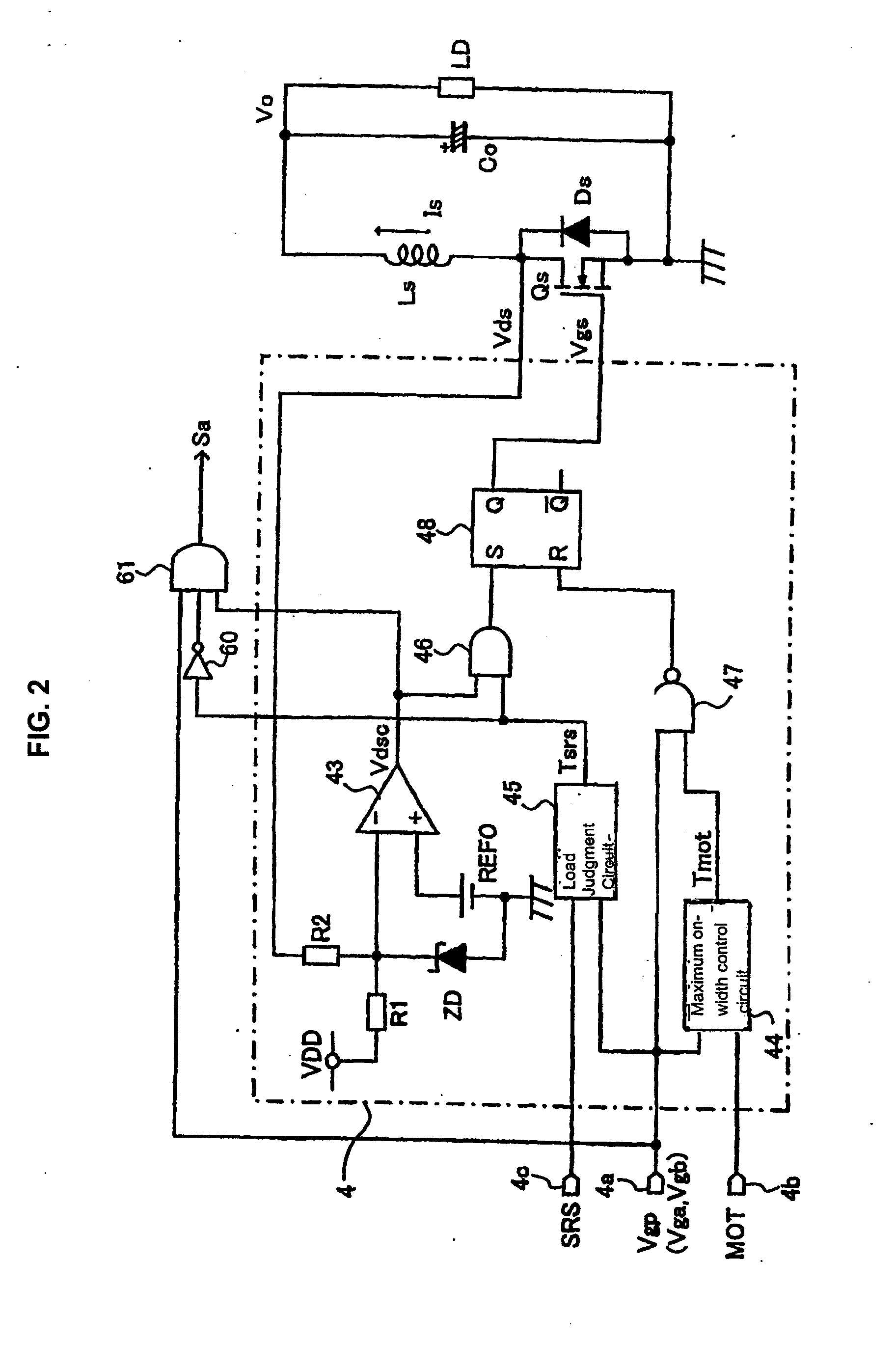However, when using such a switching power supply device as a low-
voltage, large-current power supply, when secondary currents I1 and I2 flow in the rectifying diodes D1 and D2 provided on the
secondary side of the
transformer T, large current losses VF×IO due to the forward-direction
voltage drop VF across the rectifying diodes D1, D2 occur.
Such a switching power supply device of the prior art is configured so as to cause the main switching elements Qa, Qb to perform switching operation, to obtain an arbitrary DC output via the
voltage-conversion
transformer T. In such a device, charge accumulated on the
capacitor CO is discharged, according to the magnitude and similar of the load LD connected to the
secondary side, so that current flowing back to the
transformer T (back current) occurs, and the problem of
power loss in the
backflow region arises.
Further, there is the concern of circuit destruction due to the
backflow of power to the primary side of the transformer T.
Hence while synchronous rectification in which the synchronous driving signals Vgs1, Vgs2 are completely synchronized with the
power switching signals as shown in FIG. 8 is a simple method, in this case the five backflow regions described below
pose problems, and measures to resolve these problems are necessary.
This is because in the very light loading (VLL) state, little energy is sent to the
secondary side, and so resonance operation ends in a
short length of time.
In this way, in the invention described in U.S.
Patent Application No. 2008 / 0055942, high-
frequency oscillation is repeated each time the secondary current Is decreases to reach zero, and so this method poses problems from the standpoints of
noise and power conversion efficiency.
Here, the turn-on timing of the synchronous driving
signal is determined solely in terms of the conduction voltage of the internal
diode, and so there is the problem that erroneous operation readily occurs due to the dead times set for the gate signals Vga, Vgb on the primary side.
And, because the threshold value determining the turn-off timing (VTH1) is an extremely small and negative value of approximately −20 mV, there are the problems that operation is easily affected by
noise, and that the timing of the turn-off operation is unstable.
Moreover, a
current transformer and auxiliary windings are used in the detection circuit, so that the circuit configuration is more complex, and designing the device with optimal adjusted values is difficult, so that this method is undesirable from the standpoint of cost as well.
However, such methods of detecting a light loading state have the following problems.
However, in this detection method, the load state is not detected on a pulse-by-pulse basis (here “pulse” means a switching pulse); that is, the load state is not detected each
time switching is performed.
And, because the
error amplifier 1 itself has a
response delay, a time
delay necessarily occurs from the time a very light loading state is entered until a state detection
signal indicating a very
light load is output, so that switching operation of the synchronous rectification
MOSFET cannot be stopped immediately, and a fundamental resolution of the problem of backflow is not obtained.
Hence fluctuations in error signals from the
error amplifier 1 are also small, load fluctuations cannot easily be detected reliably, and moreover such detection is easily affected by
noise.
However,
power consumption occurs in the resistance provided on the secondary side, and so there is the problem that lowering of the power efficiency is unavoidable.
 Login to View More
Login to View More  Login to View More
Login to View More 


